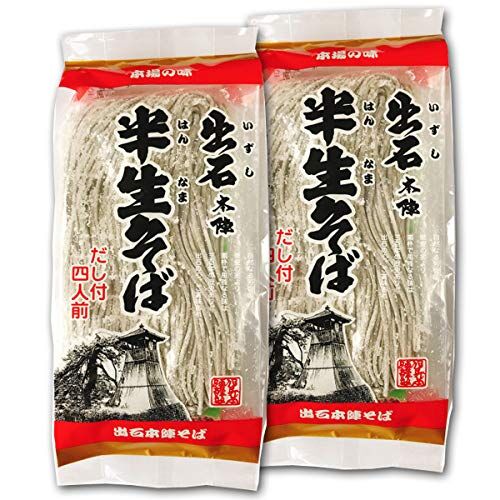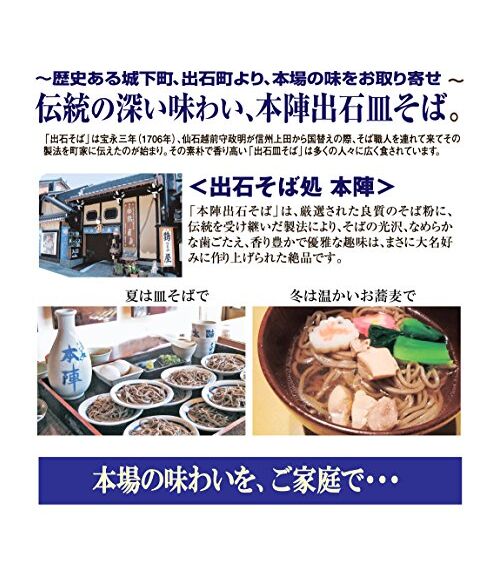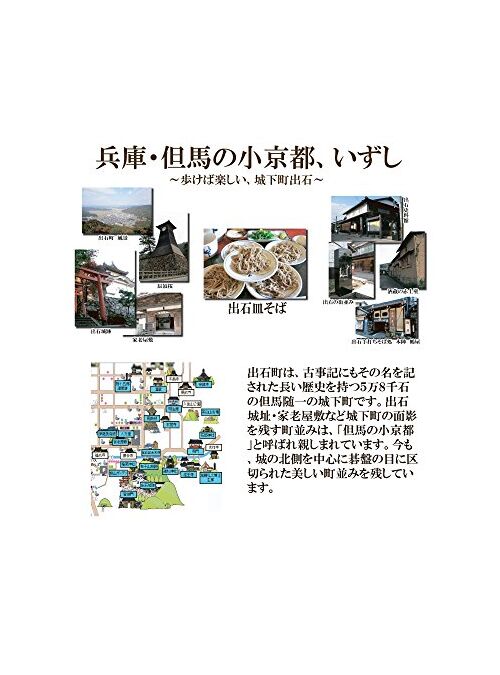DESCRIPTION
~ A historic Castle Town Izushi -cho, ordering the home taste ~ Traditional taste of Honjin Debu plate soba. "Izushi Soba" began when Masaaki Sengoku Echizen Mamoru, who changed from Shinshu Ueda in the 3rd year of Hoei (1706), brought soba craftsmen to the townhouse. The high "Izushi Plate Soba" has been a taste that represents Izushi since then, and has been widely eaten by many people. "Honjin Digi Ishishi Soba" is an exquisite that has been made into a daimyo taste, with a rich and elegant hobby of the buckwheat chewy chewy fragrance by the manufacturing method that inherited the tradition to carefully selected high -quality buckwheat flour. Hyogo and Tajima's small Kyoto Izushi ~ If you walk, Izusho -Izusho -Izushi -cho is a 58,000 -stone Tajima's largest castle town with a long history in Kojiki. The streets that leave the remnants of the castle town, such as Izushi Castle Ruins and Old Mountains, are called "Tajima's small Kyoto" and are familiar. Even now, it leaves a beautiful townscape separated by the go board's eyes around the north side of the castle. You can eat both warm soba or cold buckwheat noodles. Raw flavor at home ... Raw ingredients and ingredients [noodles] flour buckwheat flour (domestic) yam powder propylene glycol liquor (tsuyu] soy sauce (Hon brew) Mirin glucose sugar sugar sugar and bonito extract brewing brewed vinegar. How to use Konbu Seasoning (such as amino acids) You can enjoy both warm soba or cold zaru soba. Be careful of boiling water during safety warning. This product includes "soba" and "Yamamimo". Please be careful if you have allergies on raw materials.



